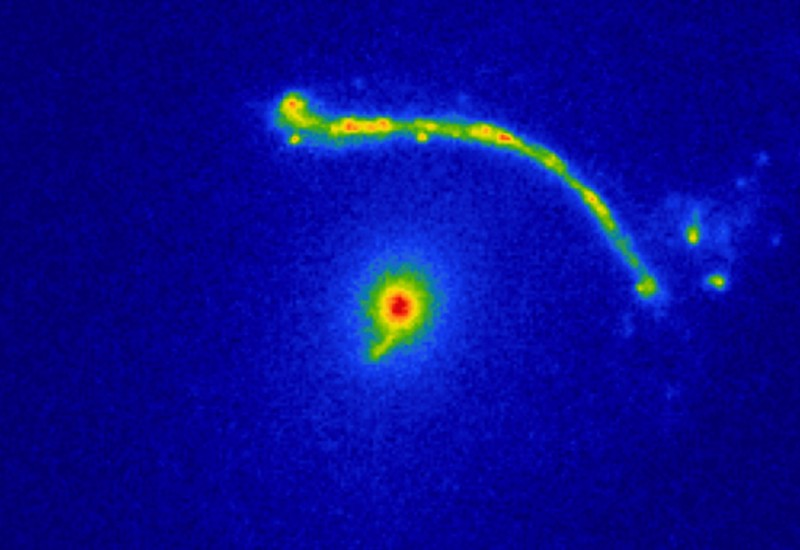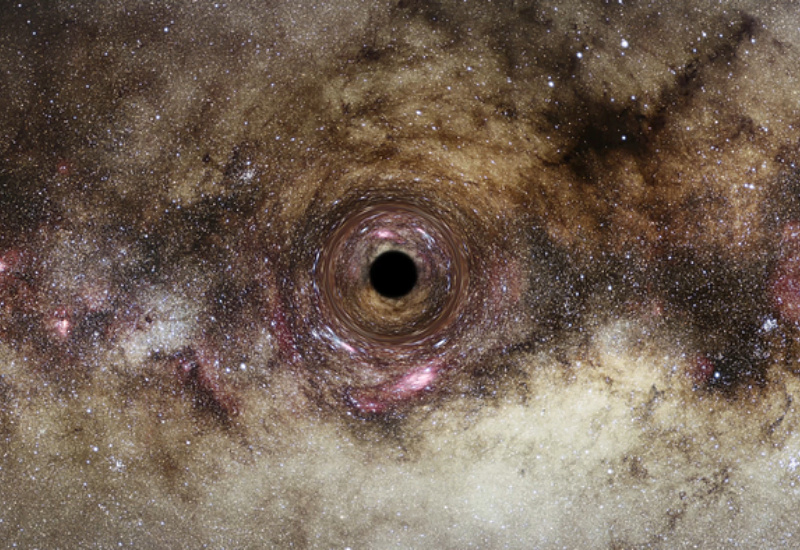"A monster with a mass of 32 billion times the sun" ... a black hole that amazes scientists

An imaginary image of a black hole swallowing a star
Using a space-time trick, astronomers have discovered one of the largest black holes ever, a super-sized monster with a mass of about 32.7 billion times the mass of the sun, according to Science Alert
And the scientific website stated in a report, on Wednesday, that the huge black hole, which is about 2.7 billion light-years away from Earth, is located in the brightest galaxy of the "Abell 1201" galaxy cluster, and it was discovered by the bending of light during the deviation of its path.
The astronomers who discovered it said in a statement that this “cosmic monster” exists “at the upper limit of the theoretical extent of black holes,” but it could only be the first of many giant cosmic planets that the team can discover using this technique, according to the “Live” website . Science ".
Finding supermassive black holes is just the first step in figuring out how these monsters grow so massive, the researchers wrote in a paper published March 28 in the journal Monthly Notices of the Royal Astronomical Society .
According to Live Science, the famous physicist Albert Einstein's general theory of relativity describes how massive objects distort the fabric of space-time. Einstein explained that gravity is not caused by an invisible force but simply our experience of space-time curvature and distortion in the presence of matter and energy.

And this curved space, in turn, sets the rules for how energy and matter move. According to one of the most famous predictions of general relativity, light travels through a highly curved region of space and time, and begins to twist and bend through a giant mirror until it appears as an extended arc called an "Einstein's bell," according to Live Science.
And the site indicated that astronomers could use this effect, known as gravitational lensing, to discover faint celestial bodies that may not be seen in another way.
"Most of the largest black holes that we know of are in an active state, where material being pulled close to the black hole heats up and releases energy in the form of light, X-rays and other radiation," said study author and astrophysicist at Durham University in the UK, James Nightingale.
"However, gravitational lensing makes it possible to study inactive black holes (which do not feed and therefore do not produce light), which is not currently possible in distant galaxies," he added.
According to Science Alert, once Nightingale and his colleagues detected the twisting arc of light around the inactive black hole, researchers used information about how it stretches out light to reconstruct the size of the black hole.
The researchers took high-resolution images using the Hubble Space Telescope, and entered measurements from them into the DiRAC COSMA8 supercomputer. The researchers simulated how much mass a black hole would need to bend light to the extent it does, according to Science Alert.

Scientists discovered that the giant cluster was huge by about 30 billion solar masses, which makes it about 8,000 times larger than the supermassive black hole at the center of the Milky Way galaxy. The largest black hole ever discovered is TON 618, with a size of nearly 40 billion solar masses, according to Science Alert.
Studying more massive black holes in this way may help scientists understand how these giant cosmic planets grow to such improbable sizes, as well as investigate how these monsters affect the evolution of the universe, according to Live Science.
"This approach could allow us to discover a greater number of black holes outside our local universe and reveal how these strange objects evolved back in cosmic time," Nightingale said.
Source : websites

